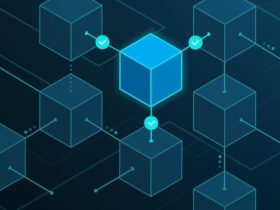In an era defined by escalating cyber risks and intensifying regulatory scrutiny, the cybersecurity landscape is rapidly evolving. From landmark legal challenges over data-use for AI training to new technical defenses against AI-driven misinformation, today’s briefing covers:
-
Regulatory Pressure on Data-Driven AI
-
AI-Powered Defense Mechanisms
-
Talent Transformation in Cyber-AI
-
Enterprise Infrastructure for Security Analytics
-
Bridging the OT Cyber Skills Gap
Together, these stories illustrate how partnerships, funding initiatives, and emerging threats are reshaping corporate strategy, workforce development, and the technological underpinnings of security operations.
1. Advocacy Group Threatens Meta with Injunction Over EU Data Use
On May 14, Austrian privacy NGO NOYB (None Of Your Business) sent a cease-and-desist to Meta Platforms, warning that using European user data to train its generative AI without explicit opt-in consent violates GDPR—and threatens an injunction that could expose Meta to collective damages running into the billions. NOYB’s founder, Max Schrems, argues that if 400 million Europeans demand €500 each, Meta faces a hefty liability, and has set a May 21 deadline for response. Meta insists its “legitimate interest” basis complies with the European Data Protection Board’s guidance and notes that users can already opt-out via in-app and email notifications.
Source: Reuters
Insight:
This clash underscores the growing regulatory headwinds confronting Big Tech’s AI ambitions. Companies leveraging vast user datasets must navigate a tightening patchwork of privacy laws—especially in the EU, where enforcement is intensifying. Legal risk here isn’t theoretical: injunctions and class actions could upend AI training pipelines, forcing firms to adopt more transparent, opt-in frameworks or pivot to synthetic and licensed data sources.
2. AWS Unveils Hallucination Detection for RAG-Based Systems
Amazon Web Services’ Machine Learning blog introduced a new toolkit to detect “hallucinations” in Retrieval-Augmented Generation (RAG) applications. By combining prompt-based LLM classifiers, semantic-similarity scoring, BERT stochastic checks, and token-level alignment detectors, AWS offers a layered approach to triage AI outputs that conflict with sourced context. The post provides reference architectures using Amazon Bedrock, SageMaker, and Titan Embeddings to build low-latency, high-precision filters—critical for sectors where AI misinformation can translate to security incidents or fraudulent manipulation.
Source: Amazon Web Services, Inc.
Insight:
As AI systems permeate security operations—from automated threat triage to policy-driven response—model hallucinations pose a unique risk. An unchecked LLM could misidentify a benign event as malicious, triggering false alarms or, conversely, gloss over real threats. AWS’s multi-technique framework marks a best-practice blueprint: embedding safeguards directly into RAG pipelines to uphold data integrity and decision reliability.
3. AI and Cybersecurity Forge a New Tech Talent Ecosystem
Industry analysis reveals that the convergence of AI and cybersecurity is catalyzing a talent transformation. Digital leaders are responding by:
-
Upskilling Existing Staff: Creating in-house academies combining threat-hunting labs with generative AI workshops.
-
Academic-Industry Partnerships: Collaborating with universities to co-design syllabi blending secure-by-design AI development and red-team exercises.
-
Vendor-Led Certification Programs: Partnering with training firms to launch micro-credentials focused on AI-powered SOC (Security Operations Center) tooling.
This shift acknowledges that tomorrow’s cyber defenders must be fluent in both adversarial ML techniques and traditional network hardening—driving a surge in demand for cross-disciplinary professionals.
Source: Diginomica
Insight:
The skills gap remains the industry’s Achilles’ heel. Organizations that invest now in hybrid AI-cyber curricula will not only bolster their defenses but also cultivate a culture of continuous learning—essential when threat actors weaponize AI at machine speed.
4. NVIDIA RTX PRO Servers Power Next-Gen Security Analytics
At COMPUTEX, NVIDIA launched its RTX PRO™ Servers—built on Blackwell architecture—to accelerate enterprise AI workloads, including cybersecurity analytics. With up to eight RTX PRO 6000 GPUs per node, 100 Gbps networking, and on-prem validated designs, security teams can now run deep-learning-driven anomaly detection, real-time log correlation, and automated threat hunting at unprecedented scale. Partners such as Cisco, Dell Technologies, and Hewlett Packard Enterprise are packaging these servers into turnkey “AI Factory” infrastructures optimized for both performance and energy efficiency.
Source: NVIDIA Newsroom
Insight:
Traditional CPU-bound SIEM (Security Information and Event Management) platforms buckle under the data volumes of modern enterprises. GPU-accelerated fabrics enable sub-second inference on terabytes of telemetry—transforming reactive post-mortems into proactive risk mitigation. As adversaries deploy ever-smarter, polymorphic malware, high-throughput computing becomes a non-negotiable pillar of resilient security operations.
5. CompTIA’s SecOT+ Certification Addresses OT Security Shortfall
Recognizing the critical vulnerabilities in operational technology (OT) environments—from power grids to manufacturing plants—CompTIA has announced SecOT+, a new cybersecurity certification tailored to OT professionals. Slated for development later this year, SecOT+ will cover:
-
Risk Assessment in Industrial Settings
-
Regulatory Compliance (ISA/IEC frameworks)
-
Secure System Hardening
-
Third-Party and Supply-Chain Risk Management
-
Legacy Infrastructure Safeguards
By unifying IT and OT security skill sets, SecOT+ aims to fill the estimated 180,000 OT cybersecurity roles posted in the U.S. in 2024.
Source: dice.com
Insight:
As critical infrastructure digitizes, the traditional IT-centric security playbook falls short. OT systems demand specialized knowledge of SCADA protocols, real-time control logic, and physical impact modeling. A dedicated certification standard not only validates expertise but also fosters cross-domain collaboration—imperative to defend against ransomware and nation-state incursions targeting industrial environments.
Conclusion
Today’s stories reflect a cybersecurity ecosystem defined by:
-
Regulatory Convergence: Legal challenges over data use are reshaping AI training practices.
-
Technical Rigor: Advanced detection frameworks are vital to curb AI-driven misinformation within security workflows.
-
Workforce Evolution: Hybrid AI-cyber skill sets are the new currency in global talent markets.
-
Infrastructure Modernization: GPU-powered analytics underpin proactive threat hunting at scale.
-
Domain-Specific Credentials: Focused certifications bridge the divide between IT and OT security.
For security leaders, the path forward demands strategic partnerships—between legal, technical, and educational stakeholders—and targeted investments that future-proof defenses against an ever-more sophisticated threat landscape.















Got a Questions?
Find us on Socials or Contact us and we’ll get back to you as soon as possible.